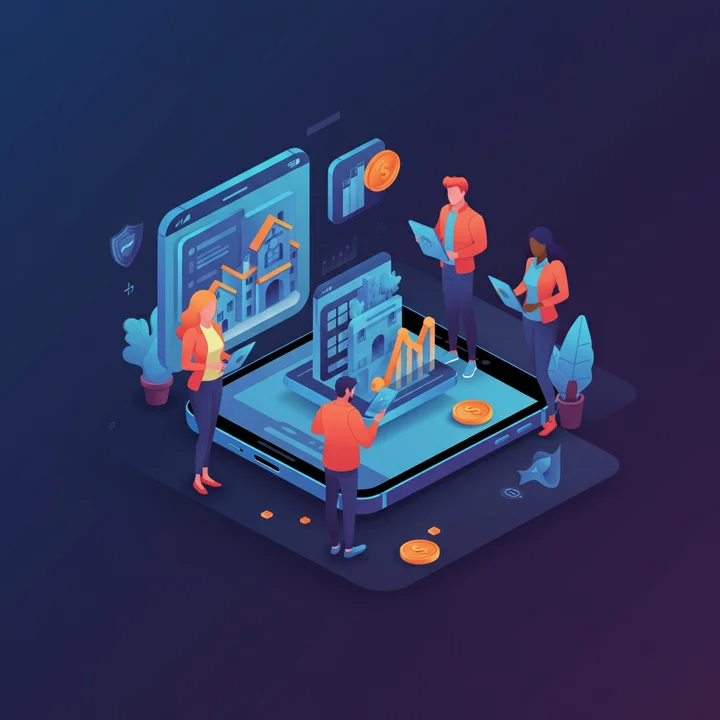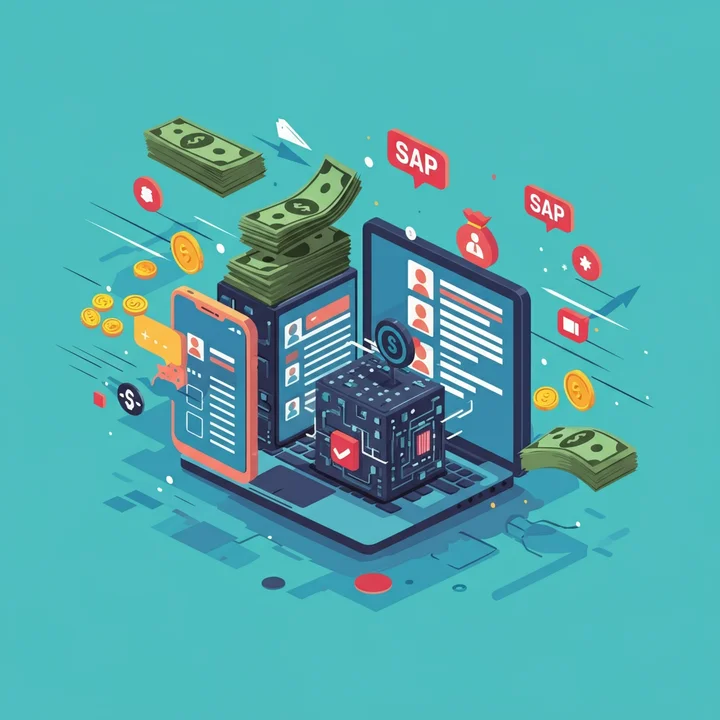The gig economy is fundamentally reshaping the way people work and earn money, offering unprecedented flexibility and independence. Powerhouse platforms such as Uber, DoorDash, and TaskRabbit are leading the way, creating a dynamic new world of opportunities for freelancers, independent contractors, and job seekers alike. Whether you're considering a full-time career pivot, searching for a lucrative side hustle, or simply aiming to monetize your unique skills on your terms, the gig economy provides an accessible path to boost your income.
This comprehensive guide will break down exactly how the gig economy operates, explore its vast earning potential, weigh the distinct pros and cons of key platforms like Uber, DoorDash, and TaskRabbit, and equip you with actionable tips to achieve sustained success in this rapidly evolving landscape.
What Exactly Is the Gig Economy?
The gig economy refers to a burgeoning trend characterized by short-term, flexible work opportunities facilitated by digital technology platforms. Unlike traditional 9-to-5 employment, "gigs" are typically task-based, allowing individuals to choose when they work, how much they work, and for whom they work. This model emphasizes independent contracting over traditional employee relationships.
Popular platforms like Uber (ride-sharing), DoorDash (food delivery), and TaskRabbit (various odd jobs and home services) are prime examples. They act as digital matchmakers, seamlessly connecting individuals seeking specific services with independent workers ready to perform those tasks.
Why Is the Gig Economy Exploding in Popularity?
Several key factors have propelled the gig economy into the mainstream, but its core appeal lies in its unparalleled flexibility and accessibility.
Unmatched Work-Life Balance: Gig work offers unparalleled control over your schedule. You can decide to work during your most productive hours—be it early mornings, late nights, weekends, or even just a few hours during a lunch break—allowing you to truly integrate work around your personal and family commitments.
Low Barriers to Entry: Most gig platforms have minimal prerequisites to get started. Often, all that's required is a background check, basic skills (like driving or assembling furniture), and access to necessary tools (a car, bike, or personal toolkit). This means you can often start earning money in a matter of days, not weeks or months.
Multiple Income Streams: A significant advantage is the ability to diversify your income. Many gig workers seamlessly juggle multiple platforms or combine gig work with a conventional job, creating financial resilience and allowing them to boost their income more effectively.
Geographical Freedom (Within Limits): While some gigs are location-dependent (like driving or deliveries), the independent nature of the work often provides the flexibility to perform gigs in different cities or even while traveling, as long as the platform operates in that area.
Platform Breakdown: Uber, DoorDash, and TaskRabbit—Your Gateway to Gigs
To truly thrive and earn money effectively in the gig economy, it's essential to understand the unique characteristics, earning potential, and operational nuances of each major platform. Here’s a detailed overview of three industry giants:
1. Uber: The Ride-Sharing Pioneer
What is it? Uber is the world's leading ride-sharing platform, connecting drivers with passengers who need transportation. It's one of the most recognized and established gig economy opportunities.
Earning Potential: Average hourly earnings for Uber drivers can vary significantly by location, demand, and driver efficiency but typically range from $15 to $25 per hour after accounting for expenses. Drivers can strategically boost earnings by driving during surge pricing periods (when demand is exceptionally high), utilizing promotions, and earning tips from satisfied riders.
Pros of Driving for Uber:
Ultimate Schedule Flexibility: You decide exactly when and how much you want to work, allowing you to fit driving around other commitments.
High Demand in Urban Areas: In major cities, there's almost always a demand for rides, ensuring a consistent flow of potential trips.
Low Barrier to Entry: You generally only need a vehicle that meets Uber's requirements, a valid driver's license, and a clean driving record to start.
Instant Payouts: Many drivers can access their earnings almost immediately, which is excellent for managing cash flow.
Cons of Driving for Uber:
Vehicle Expenses Add Up: You are responsible for all vehicle maintenance (oil changes, tire replacements, brakes), fuel, insurance, and depreciation, which can significantly eat into net earnings.
Fluctuating Gas Prices: Rising fuel costs directly impact your profitability.
Customer Interactions: While often positive, you may occasionally deal with difficult or demanding passengers or experience late-night trips that some drivers prefer to avoid.
Income Instability: Earnings can be inconsistent due to variable demand and the number of other drivers on the road.
2. DoorDash: Delivering Meals, Delivering Income
What is it? DoorDash is a leading food and grocery delivery platform where independent contractors, known as "Dashers," pick up meals from restaurants or grocery orders from stores and deliver them directly to customers' homes.
Earning Potential: Dashers typically earn $10 to $20 per hour, with the potential for higher earnings during peak meal times (lunch and dinner rushes) when the platform offers "promotions," "challenge bonuses," or "peak pay." Tips often constitute a significant portion of overall earnings, making excellent service crucial.
Pros of Working for DoorDash:
No Passengers to Manage: Unlike ride-sharing, your primary focus is solely on efficient deliveries, reducing complex interactions.
Pre-Paid Orders: All orders are pre-paid through the app, eliminating awkward payment exchanges or cash handling.
High Flexibility: You can dash whenever you want, from a quick lunchtime shift to full-day or late-night dinner rushes.
Relatively Low Vehicle Wear: Generally less wear and tear on your vehicle compared to ride-sharing, as speeds are lower and routes often shorter.
Cons of Working for DoorDash:
Earnings Dependence on Location & Volume: Your income heavily relies on the density of restaurants, customer demand, and the number of orders in your specific delivery zone.
Lower Profit Margins on Some Orders: After factoring in gas and vehicle wear, some shorter or lower-paying orders may not yield significant profit.
Restaurant & Parking Challenges: You may encounter delays at busy restaurants or face parking difficulties, which can impact your efficiency and frustration levels.
Limited Customer Interaction (Less Tipping for Some): For some, less direct interaction can lead to fewer opportunities to impress a customer and earn a higher tip.
3. TaskRabbit: Monetizing Your Skills, One Task at a Time
What is it? TaskRabbit connects independent contractors ("Taskers") with individuals and businesses needing help with a wide array of odd jobs, household services, and specialized skills. This type of job includes everything from furniture assembly, cleaning, handyman services, moving help, personal assistance, or even waiting in line for someone.
Earning Potential: Taskers typically earn between $20 and $60 per hour, with rates set by the Tasker based on their skillset and the complexity of the task. Highly specialized services like plumbing, electrical work, or advanced IT support can command significantly higher rates (sometimes $75+ per hour).
Pros of Working for TaskRabbit:
Diverse Skill Monetization: You can offer services based on skills you already possess or enjoy doing, providing a broader range of earning avenues.
Variety of Tasks: The diverse nature of available tasks means less monotony and more engaging work.
You Set Your Rates: Taskers have direct control over their hourly rates, allowing you to value your time and expertise appropriately.
Task Details in Advance: You can review job descriptions and proposed rates before accepting, allowing you to choose tasks that fit your abilities and desired pay.
Cons of Working for TaskRabbit:
Income Can Be Inconsistent: The availability of certain tasks can be seasonal or vary significantly by location, making earnings less predictable compared to daily driving or deliveries.
Self-Marketing & Reputation Building: You need to actively build a strong profile with positive reviews and maintain high ratings to attract consistent work. This takes time and effort.
Physical Demands: Many tasks (e.g., furniture assembly, moving) can be physically demanding.
Client Communication & Problem Solving: You'll directly interact with clients, which requires strong communication and problem-solving skills to manage expectations.
The Broader Pros and Cons of the Gig Economy
While individual platforms have their unique features, the gig economy as a whole presents a distinct set of advantages and disadvantages for those looking to earn money:
Pros of Gig Work:
Unrivaled Flexible Work Schedule: This is the cornerstone. You truly have the autonomy to work as much or as little as you want, perfectly fitting gigs around personal appointments, family commitments, or a primary job.
High Accessibility: Most platforms don’t demand advanced degrees, extensive resumes, or years of prior experience. This lowers the barrier to entry significantly, allowing almost anyone with a relevant skill or resource to start earning money in a matter of days.
Diverse Opportunities: The sheer variety of tasks available means there's truly something for almost every skill level and interest, from delivering food to creative tasks or complex professional services.
Financial Autonomy: You become your own boss, deciding your workload and effectively your income potential.
Cons of Gig Work:
Income Instability: Earnings can be highly inconsistent. Factors like demand fluctuations, the number of active workers, seasonality, and even weather can lead to unpredictable income, especially during slower periods or in less populated areas.
No Employee Benefits: Unlike traditional employment, gig work generally does not include crucial benefits such as health insurance, paid time off, sick leave, retirement plans, or unemployment insurance. It is your responsibility to secure these on your own.
Self-Employment Costs & Taxes: As an independent contractor, you're responsible for all your own business expenses (fuel, vehicle maintenance, tools, phone plans) and must manage your taxes (including self-employment tax, which covers Social Security and Medicare contributions). This requires careful budgeting and recordkeeping.
Potential for Burnout: While flexibility is a giant reward, the pressure to earn money can lead to overworking, juggling multiple platforms, or taking on demanding gigs, which can result in significant stress and burnout if boundaries aren't set.
Top Tips for Success in the Gig Economy
Succeeding in the gig economy requires more than just signing up for an app. Adopt these strategies to maximize your earnings and longevity:
Choose the Right Platform(s) for YOU: Don't just pick the most popular one. Start by identifying your strongest skills, genuine interests, and available resources (e.g., a reliable car). If you love driving and meeting people, Uber might be a perfect fit. If you enjoy hands-on tasks and problem-solving, TaskRabbit could be your calling. If you prefer solo work with quick turnaround, DoorDash might be ideal.
Strategically Evaluate Peak Hours & Zones: For delivery and ride-sharing, understand when and where demand is highest. Working during peak hours (e.g., lunch/dinner rushes, weekend evenings, major events) and in high-demand zones will significantly maximize your earnings due to surge pricing or higher order volume.
Prioritize Professionalism & Customer Service: Happy customers are the bedrock of success. Always deliver a high standard of service—be polite, communicate clearly, be punctual, and go the extra mile where appropriate. Great reviews and tips are your most valuable currency in the gig economy, directly influencing future opportunities and income.
Meticulously Track All Expenses: As an independent contractor, every expense related to your gig work is potentially tax-deductible. Keep a detailed log of all costs: fuel, vehicle maintenance, tolls, mileage, phone bill percentage, tools purchased, and any platform fees. Use apps or spreadsheets to simplify your accounting for tax season.
Diversify Your Income Streams (Multi-Apping): Relying too heavily on a single platform can be risky due to fluctuating demand or algorithm changes. Consider "multi"-apping"—using several platforms simultaneously (e.g., DoorDash for steady day jobs and TaskRabbit for higher-paying, occasional gigs). This technique balances out income inconsistencies and expands your potential earnings.
Invest in Your Tools & Efficiency: A reliable vehicle (well-maintained), a robust smartphone with a decent data plan, and a quality toolkit (for TaskRabbit) can dramatically improve your efficiency, allow you to take on more jobs, and boost your ratings. Consider accessories like phone mounts, hot bags for food, or a power bank.
Establish Clear Boundaries to Prevent Burnout: The flexibility of the gig economy presents both advantages and disadvantages. It's easy to overwork yourself in pursuit of more income. Schedule dedicated downtime, know when to log off, and prioritize rest to avoid burnout. A sustainable side hustle is one you can maintain long-term without sacrificing your well-being.
Understand Your Taxes: Since you're an independent contractor, taxes are not automatically withheld. Set aside a percentage of your earnings for quarterly estimated taxes. Consider consulting a tax professional to understand all applicable deductions and ensure compliance.
Build Your Future in the Gig Economy Today
The gig economy has undeniably redefined how we think about work, offering unparalleled flexibility, independence, and diverse opportunities for freelancers, job seekers, and independent contractors. Whether you’re delivering food, driving passengers across town, assembling furniture, or leveraging any other skill, there’s a gig out there for you that can significantly boost your income.
By understanding the unique mechanics of different platforms, carefully weighing the pros and cons, and diligently applying the actionable tips shared above, you’ll be well on your way to not just participating in, but truly thriving in this dynamic new job market.
Are you prepared to embrace this opportunity and maximize your income? Sign up for platforms like Uber, DoorDash, and TaskRabbit today, and start making your gig economy goals a reality!



